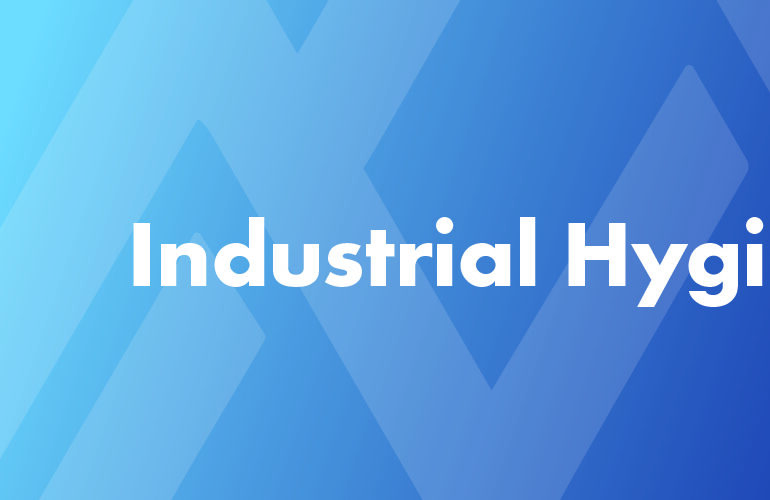Knowing the hazards of combustible dust and its effects on the surrounding environment is crucial for many asset-owning managers. Materials that can be categorized as “combustible dust” include metal dust, wood dust, coal and carbon dust, plastic dust, organic dust (sugar, flour, paper, soap, or dried blood), agricultural dust, and textile dust. Combustible Dust Hazard Assessments inform manufacturing leaders of the potential hazards and the corrective actions for their facilities.
For example, imagine you’re the manager of a plywood plant. After arriving at the plant in the morning, you notice several vacuums on your plant floor. You come to find out that the newly-hired janitor —hoping to easily clean up messes and adjust ventilation — purchased these vacuums to use in your shop.
However, the janitor didn’t consider the electrical classification of the vacuums. When he put the vacuums in your plant — electrical devices in an atmosphere where there’s dust, a dust cloud, or where dust could be propagated — he just created ignition sources. Ignition sources are an obvious hazard — so how should you mitigate risk within your plant?
Here’s what you need to know about Combustible Dust Hazard Assessments.
Comply with NFPA Codes and Standards
The Occupational Safety and Health Administration (OSHA) issued a combustible dust compliance directive, updated in October of 2015. Through the OSHA General Duty Clause, asset-owning companies must read and understand the OSHA Compliance Directive and the National Fire Protection Association (NFPA) codes to prevent a fire, flash fire, or explosion hazard and potentially a citation from a regulatory authority.
In September 2020, NFPA published the deadline to complete the Combustible Dust Hazard Assessment every five years in accordance with the NFPA standards 652 and 654.
OSHA requires this regulatory requirement due to the dangerous nature of combustible dust.
Protect your People, Property, and Neighboring Areas
Combustible dust is exactly what it sounds like. It’s ignitable and has the potential to create an explosive environment. Therefore, your workforce, your property (including your equipment), and the surrounding areas such as residential neighborhoods or shopping centers are susceptible to damage.
Even if your facility has a fully automated process, you can still incur combustible dust issues. Completing a Combustible Dust Hazard Assessment ensures the protection of the people and property in and around your facility.
Satisfy Insurance Company Policies
Your insurance provider will conduct a third-party audit at your site each year. With the requirement from NFPA, the auditor will ask to see your Combustible Dust Hazard Assessment, and if you don’t have it, the insurance provider can drop coverage from your facility or increase your premium.
Due to COVID, there were few audits being conducted in 2020 and early 2021. Since late 2021, as the impact of COVID has lessened, the number of audits has increased, which leaves many companies scrambling to complete hazard assessments.
Engaging with Industry Specialists
Most companies don’t have the in-house resources to complete a Combustible Dust Hazard Assessment. Therefore, outside contractors are often needed to remain in compliance.
If you are an asset-owning leader in need of an outside contractor, it is ideal to work with someone with an engineering background — someone who understands conveyance, bearings, and chain drive systems. Contractors with mechanical and electrical backgrounds will be able to understand concepts such as static discharge and their ability to create an explosion.
Contractors must be well versed in the NFPA regulations 652 and 654 and must understand combustibility. With different types of facilities like grain handling, metal cutting, agricultural sites, and paper mills, you should work with a contractor well-versed in process design who understands how your facility operates.
What to Expect Before Conducting a Combustible Dust Hazard Assessment
Your contractor needs to have an overall grasp of your facility before conducting a proper assessment to confirm that it’s required.
Prior to the Combustible Dust Hazard Assessment, your contractor will:
- Ask preliminary questions to determine the type of dust.
- Conduct a site visit to determine the condition of the facility.
- Request pictures and videos of your facility.
- Collect dust from your site and test it in a laboratory (this is called a “go or no-go” test).
- Request facility equipment drawings/schematics to perform benchtop modeling for the combustible dust assessment.
If the dust at your site is a “go”, it failed the combustibility test and could explode. Your contractor will schedule the Combustible Dust Hazard Assessment.
Conducting your Combustible Dust Hazard Assessment
The Combustible Dust Hazard Assessment will consist of a walk-through of the facility. Each area of the facility that has potential for combustible dust generation will be reviewed and ranked for risk based on the current condition of the facility and the likelihood and severity of an explosion. If there are any existing safeguards, such as Hot Work programs or dust collection systems, to prevent ignition or propagation from a localized explosion, those will be captured and reviewed during the assessment.
During the assessment, your contractor will investigate the following topics including but not limited to:
- Housekeeping
- Ignition source controls
- Use of properly rated portable vacuums
- Condition of standard operating procedures (SOP)
- Employee/operator trainings concerning the hazards of combustible dust.
If you operate a Process Safety Management (PSM) site, other topics will be considered including the review of new equipment, the requirement of flame-retardant garments, and the inclusion of a fire suppression system on the enclosures of the combustible dust equipment.
Your contractor will also interview the operators of the equipment in these areas while onsite to compare the current conditions and procedures with the procedures stated in your SOP.
Once your assessment is complete, the contractor will issue a report with their findings and recommendations to mitigate risk at your facility. Examples of recommended installations include fire suppressors, isolation valves, ventilation or dust collection systems, and central vacuum systems.
Often, design changes to dust-collecting systems are required or ventilation systems need to be adjusted. Your contractor may also spec equipment and provide cost estimates for purchasing.
Regardless of the specific recommendations, your contractor will ensure that you are aware of what modifications need to occur for your facility to comply with OSHA and NFPA regulations.
Teaming with Tormod for your Assessment
Tormod provides clients with customized solutions that meet OSHA and NFPA requirements through Combustible Dust Hazard Assessments. With a Team of industry specialists, Tormod offers in-house design mitigation of fugitive dust and electrical classification studies to determine risk and mitigate ignition sources.
To schedule a Combustible Dust Hazard Assessment with Tormod, visit our website.


